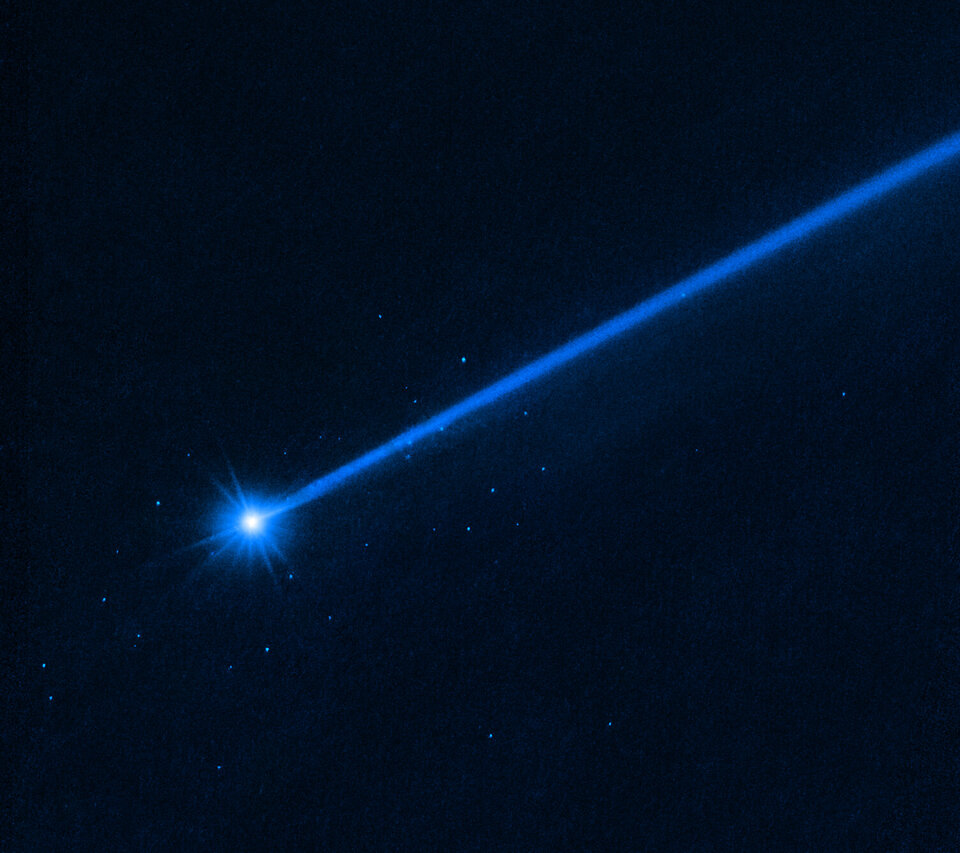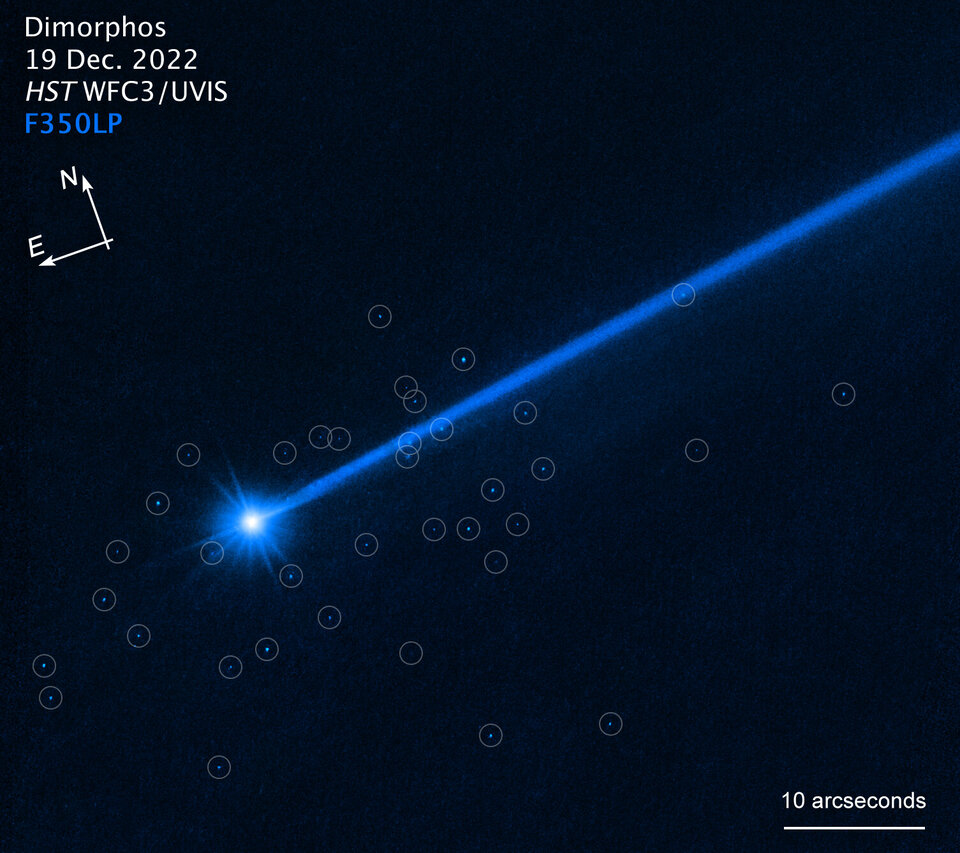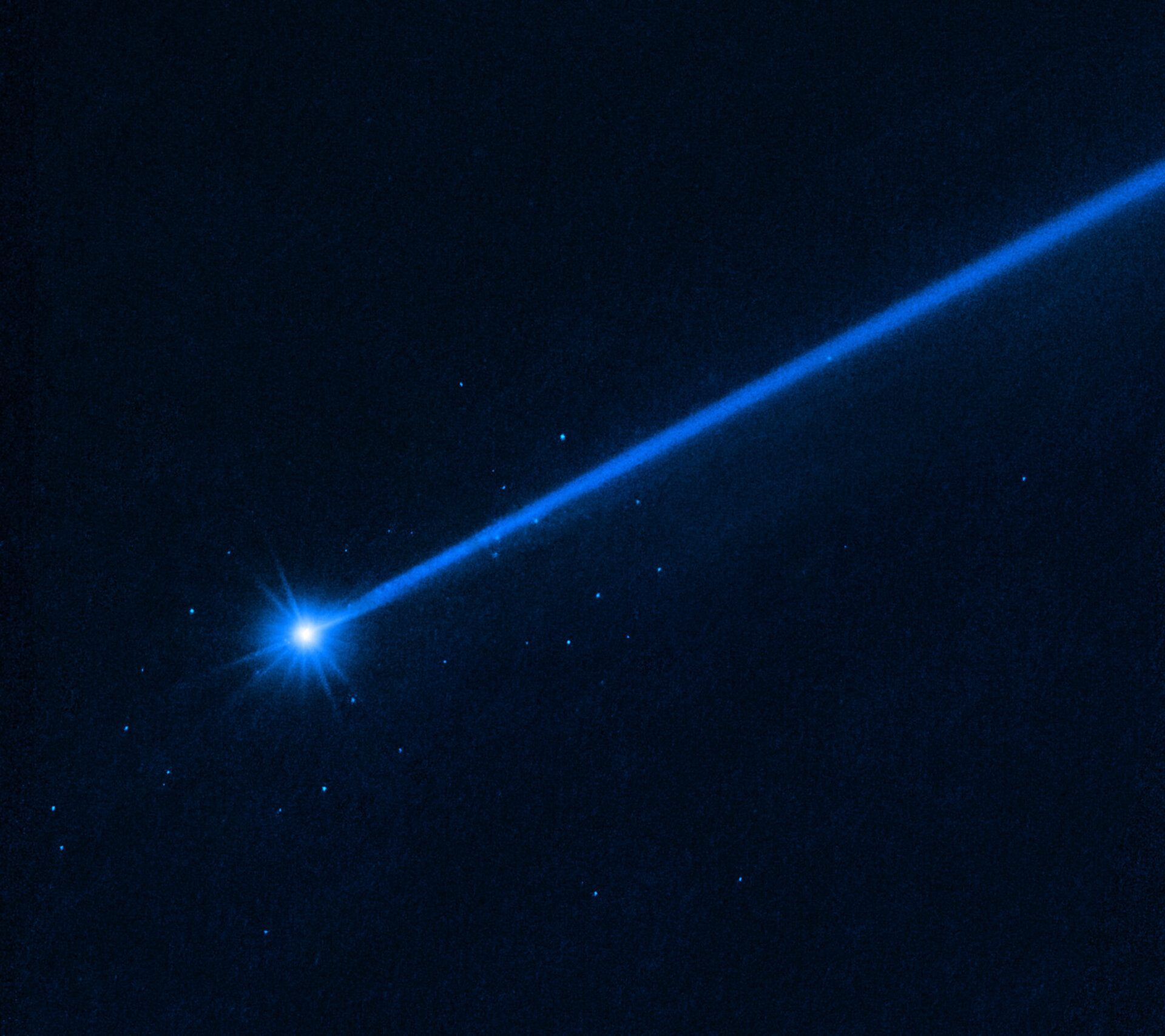Hubble sees boulders escaping from asteroid Dimorphos
Astronomers taking advantage of the NASA/ESA Hubble Space Telescope’s extraordinary sensitivity have discovered a swarm of boulders that were possibly shaken off the asteroid Dimorphos when NASA deliberately slammed the half-tonne DART impactor spacecraft into Dimorphos at approximately 22 500 km per hour. DART intentionally impacted Dimorphos on 26 September 2022, slightly changing the trajectory of its orbit around the larger asteroid Didymos.

The 37 ejected boulders range in size from 1 m to 6.7 m across, based on Hubble photometry. They are drifting away from the asteroid at around 1 km per hour. The total mass in these detected boulders is about 0.1% the mass of Dimorphos. The boulders are some of the faintest objects ever imaged in the Solar System.
This opens up a new dimension for studying the aftermath of the DART experiment using ESA’s upcoming Hera mission, which is due to launch in 2024. The spacecraft will perform a detailed post-impact survey of the target asteroid Dimorphos. Hera will turn the grand-scale experiment into a well-understood and repeatable planetary defence technique that might one day be used for real [1].
The boulders are most likely not shattered pieces of the diminutive asteroid caused by the impact. They were already scattered across the asteroid’s surface, as evident in the last close-up picture taken by the DART spacecraft just two seconds before collision, when it was only 11 km above the surface.
The science team that observed these boulders with Hubble estimates that the impact shook off 2% of the boulders on the asteroid’s surface. While the boulder observations by Hubble also give an estimate for the size of the DART impact crater, Hera will eventually determine the actual crater size.

Long ago, Dimorphos may have formed from material shed into space by the larger asteroid Didymos. The parent body may have spun up too quickly or could have lost material after a glancing collision with another object, among other scenarios. The ejected material formed a ring that gravitationally coalesced to form Dimorphos. This would make it a flying rubble pile of rocky debris loosely held together by the relatively weak pull of its gravity. Therefore, the interior is probably not solid, but has a structure more like a bunch of grapes.
It’s not clear how the boulders were lifted off the asteroid’s surface. They could be part of an ejecta plume that was photographed by Hubble and other observatories. Or a seismic wave from the impact may have rattled through the asteroid – like hitting a bell with a hammer – shaking loose the surface rubble.
The DART and LICIACube (Light Italian CubeSat for Imaging of Asteroids) teams have also been studying boulders detected in images taken by LICIACube’s LUKE (LICIACube Unit Key Explorer) camera in the minutes immediately following DART's kinetic impact.
Notes
[1] Just like Hubble and the NASA/ESA/CSA James Webb Space Telescope, NASA’s DART and ESA’s Hera missions are great examples of what international collaboration can achieve; the two missions are supported by the same teams of scientists and astronomers, and operate via an international collaboration called AIDA – the Asteroid Impact and Deflection Assessment.
NASA and ESA worked together in the early 2000s to develop asteroid monitoring systems, but recognised there was a missing link in the chain between asteroid threat identification and ways of addressing that threat. In response NASA oversaw the DART mission while ESA developed the Hera mission to gather additional data on DART’s impact. With the Hera mission, ESA is assuming even greater responsibility for protecting our planet and ensuring that Europe plays a leading role in the common effort to tackle asteroid risks. As Europe’s flagship planetary defender, Hera is supported through the Agency’s Space Safety programme, part of the Operations Directorate.
More information
The Hubble Space Telescope is a project of international cooperation between ESA and NASA.
Contact:
ESA Media relations
media@esa.int


